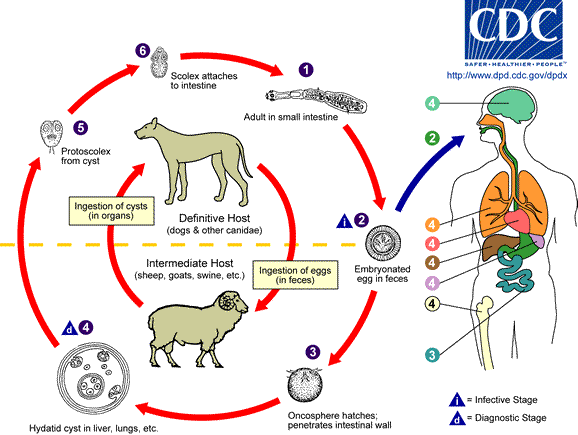Echinococcus granulosus
A Parasitic Tapeworm
Reproduction
E. granulosus organisms take part in both asexual reproduction and sexual reproduction. Asexual reproduction takes place via budding in the intermediate host, while sexual reproduction takes place by gamete fusion in the definitive host. E. granulosus is hermaphroditic, containing both male and female sex organs.
After the eggs are ingested by the intermediate host, they hatch to form a oncosphere, or tapeworm embryo. Then they burrow by using their hooks through the small intestine of their host by using their hooks, one of their many adaptations. There they enter the blood stream and travel to one of many available organs and hydatid cyst formation begins. Daughter cysts, which travel throughout the host, are produced by asexual budding of the original cysts. Here they grow in size and number. They are then transferred to the definitive host after the canine ingests the infected tissues of the intermediate host.
After being ingested, the organism travels to the small intestine where it attaches and develops into the adult form. Proglottids, or segments of the tapeworm that contain a complete reproductive system-both male and female sex organs, start producing eggs via sexual reproduction. The proglottid containing the fertilized eggs eventually detaches from the rest of organism and ruptures in the small intestine. The eggs are then released into the environment via defecation by the definitive host to be taken up by the intermediate host. The life cycle of E. granulosus is then perpetuated. The reproductive style of this species, like most parasites, is intimately related to its lifestyle and interactions with its host.
